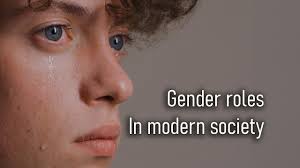
Gender roles in relationships have undergone significant changes over the years, especially in today’s modern society.
Traditional roles, where men were seen as breadwinners and women as homemakers, are no longer the default. Couples are now seeking more balanced, equitable partnerships that allow for flexibility and mutual respect.
However, navigating these evolving gender roles can be challenging, requiring open communication, empathy, and a willingness to adapt.
This article explores how couples can successfully navigate gender roles in modern relationships, ensuring a healthy and fulfilling partnership.
1. The Evolution of Gender Roles
Historically, gender roles in relationships were clearly defined, often rooted in societal norms and cultural expectations. Men were typically expected to provide financial support, while women were responsible for managing the household and raising children. While some couples still adhere to these traditional roles, many are embracing more fluid dynamics that reflect modern values and individual preferences.
Today, the concept of gender roles is more diverse and inclusive, recognizing that both partners can share responsibilities in various aspects of life, from careers to childcare. This shift has led to greater equality in relationships, but it also brings new challenges, such as negotiating duties and managing expectations.
2. Building Trust in Relationships Through Flexibility
One of the keys to navigating gender roles in modern relationships is building trust through flexibility. Trust is the foundation of any successful partnership, and it is particularly important when redefining roles within a relationship.
- Embrace Change: Modern relationships often require both partners to adapt to changing circumstances, whether it’s career shifts, parenting responsibilities, or household duties. By being open to change and willing to share responsibilities, couples can build trust and demonstrate their commitment to each other’s well-being.
- Communicate Openly: Trust is strengthened through honest and transparent communication. Couples should discuss their expectations, needs, and concerns regarding gender roles. This includes being clear about what each partner is comfortable with and where compromises may be necessary. Open communication helps prevent misunderstandings and ensures that both partners feel heard and respected.
3. Effective Conflict Resolution Strategies for Gender Role Disagreements
Disagreements about gender roles can lead to conflicts in relationships, especially if one partner feels that the roles are imbalanced or unfair. Effective conflict resolution strategies are essential for addressing these issues and maintaining a harmonious partnership.
- Active Listening: When conflicts arise, it’s important for both partners to practice active listening. This means giving each other the space to express their thoughts and feelings without interruption. By listening carefully, partners can better understand each other’s perspectives and work together to find a resolution.
- Compromise and Collaboration: Resolving conflicts about gender roles often requires compromise. Both partners should be willing to make concessions and collaborate on finding solutions that work for both parties. This might involve redefining certain roles or sharing responsibilities more equitably.
- Seek External Support: In some cases, couples may benefit from seeking external support, such as marriage counseling. A counselor can provide guidance on navigating gender roles and offer strategies for resolving conflicts in a constructive manner. Marriage counseling success stories often highlight how professional support can help couples overcome challenges and strengthen their relationship.
4. Maintaining Emotional Intimacy Amidst Changing Gender Roles
As gender roles evolve, it’s important for couples to maintain emotional intimacy. Emotional intimacy is the deep connection that couples feel when they are emotionally attuned to each other, and it is vital for a strong and healthy relationship.
- Prioritize Quality Time: With shifting roles and responsibilities, it can be easy to lose sight of emotional intimacy. Couples should make a conscious effort to spend quality time together, whether it’s through regular date nights, shared hobbies, or simply enjoying each other’s company. This helps keep the emotional bond strong and reinforces the partnership.
- Express Appreciation: Acknowledging and appreciating each other’s contributions, regardless of whether they align with traditional gender roles, is crucial for maintaining emotional intimacy. When partners feel valued and recognized for their efforts, it strengthens their connection and fosters a positive dynamic within the relationship.
- Stay Emotionally Open: As roles change, so do emotional needs. Couples should remain emotionally open with each other, sharing their feelings and concerns. This openness allows partners to support each other through transitions and ensures that emotional intimacy is preserved.
5. Balancing Work and Family Life in Modern Relationships
One of the most significant challenges of navigating gender roles in modern relationships is balancing work and family life. As both partners often pursue careers and share parenting duties, finding a balance that works for the family can be difficult.
- Set Clear Priorities: Couples should discuss their priorities when it comes to work and family life. This includes determining how to allocate time and energy to each area and being clear about what is most important. By setting priorities, couples can make informed decisions that align with their values and goals.
- Share Responsibilities: Balancing work and family life requires a shared effort. Couples should work together to distribute responsibilities in a way that is fair and manageable for both partners. This might mean alternating who takes on certain tasks or finding ways to support each other during busy periods.
- Create a Support System: Having a strong support system can make it easier to navigate gender roles and balance work and family life. This might include relying on extended family, hiring childcare, or seeking support from friends and community resources.A robust support system helps alleviate the pressure on both partners and allows for a more balanced and fulfilling relationship.
Conclusion: The Path to Equitable and Fulfilling Relationships
Navigating gender roles in modern relationships is an ongoing process that requires communication, flexibility, and mutual respect.
As couples move away from traditional roles and embrace more equitable dynamics, they can build stronger, more fulfilling partnerships. By focusing on trust, effective conflict resolution, emotional intimacy, and balancing work and family life, couples can successfully navigate these changes and create a relationship that reflects their shared values and goals.
In the end, the most important aspect of any relationship is the connection between partners. By working together to navigate gender roles and supporting each other through the challenges and opportunities that arise, couples can create a partnership that is both equitable and deeply rewarding.
Thank you for reading!
Kindly like and share.
Share this content:






Hmmm, so deep!
You should take part in a contest for one of the best blogs on the web. I will recommend this site!
Wow, thank you so much! That really means a lot to me.
I’m honored by your recommendation and your belief in this blog—it truly encourages me to keep going 🙏.